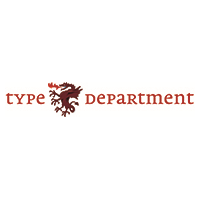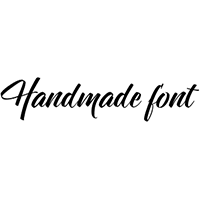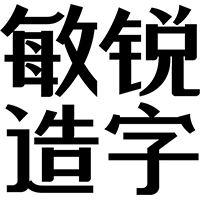Hans Reichel Passes Away At Age 62

Last week, on Tuesday November 21st, the experimental electric and acoustic guitarist, avant-garde composer, instrument builder and inventor, graphic designer and type designer Hans Reichel suddenly and unexpectedly passed away in his studio in Wuppertal, Germany. Virtually unknown to the audience at large, he was highly regarded amongst guitarists and in the world of experimental music, who considered him to be one of the most unusual musicians at work in the world. Guitar Player included him in their list of "30 Most Radical Guitarists" in a 1997 issue of the magazine. Designers and typographers know him as the creator of the popular Barmeno and the world-renowned FF Dax family, arguably one of the most widely used typefaces in advertising and marketing today. Other type designs by Reichel are FF Daxline, FF Sari, FF Schmalhans, and FF Routes.
: : U P D A T E : : Typeradio interview with Hans Reichel added
Hans Reichel on guitar: "Could Be Nice Too", from The Death of the Rare Bird Ymir / Bonobo Beach (1979/1981)
Hans Reichel on daxophone: "Hi" & "Panne Lieb", from Shangaied on Tor Road, The World's 1st Operetta Performed on Nothing But The Daxophone
Hans Reichel was a musical wunderkind. Teaching himself the violin at the tender age of 7, he joined the school orchestra. Around age 15 he became interested in rock music, including The Beatles, The Rolling Stones, and later, Frank Zappa, Cream, and Jimi Hendrix. Reichel picked up guitar and bass and played in a number of bands, before giving up music for a time to study philosophy and graphic design. He worked a few years as a typesetter and producer of construction work signs. Reichel would eventually come back to music, causing a sensation in 1970 with peculiar, self-built guitars. He performed several concerts series in Europe, USA, Canada and Japan, and released more than 30 albums. In 1985 he created the daxophone, a string instrument with wooden tongues. For more information on Hans Reichel the musician, read the concise obituary on Tiny Mix Tapes or the comprehensive entry on Answers.com
Hans Reichel's career as a type designer started with Barmeno, published by Berthold in 1983. The following quotes by Hans Reichel are freely translated and restructured from Deutsche Schriften für die Welt (German Typefaces for The World), an interview with Der Spiegel magazine in May 2007.
In the seventies I was a musician, always on the road with self-built guitars and so on. I constantly needed to design promotional items – concert posters, flyers, album covers, etc. I always liked doing it myself, with pencil and marker pens. This was before the personal computer, so everything had to be done by hand. Drawn big on paper, then reduced at the copy shop, puzzled together, and so on. This is how my first typeface Barmeno originated.

FF Sari in use for telecom operator Símmin, Iceland
Typical for this idiosyncratic rounded sans serif are the absence of "spurs", which became Reichel's signature style.
My type designs can easily be recognised by the absence of a structural element that the lowercase of almost all other text faces have in common: the small straight extensions of the stems beyond the point where they are joined by a curve. They used to make sense from a historical viewpoint, as they originated in the mediaeval typefaces. Yet these little stubs, found for example at the top left of the "p" and bottom right of the "a", are absent in my designs. This is why they have a stylised and clear appearance, without being less legible, on the contrary.
The fact that Barmeno enjoyed a seizable success did not deter Hans Reichel from revisiting this concept of a rounded spurless design in 1999 with FF Sari. Expanding on his original ideas he devised a more versatile and complete interpretation, with a wider range of weights and a comprehensive character set.


FF Dax in use for the customer magazine Compass and flyers for Comdirect Bank, Germany
Reichel's real breakthrough as a type designer came with the typographic powerhouse FF Dax. Also spurless, but more angular and systematic than its predecessor, it has become immensely popular since its release fifteen years ago. The FF Dax family was gradually augmented with Compact, Condensed and Wide versions, and italics for all weights in all variants. The very condensed FF Schmalhans put a surprising Art Deco twist on this typographic model.

Specimen for FF Dax Compact
Also FF Dax was subsequently revisited. After seeing Akira Kobayashi's lecture about Adrian Frutiger's Avenir Next at TYPO Berlin 2004, Hans Reichel was handed a brochure detailing the typeface at the Linotype booth. Here is what he told to Ivo Gabrowitsch, Marketing Director of FontFont.
Carefully studying it, I said to myself I could do that as well. While travelling back home, I already started working on Daxline on the train. It eventually took a long time and was painstaking, yet at the same time very exciting work. When it was done eight months later, so was my last relationship, and with it my beautiful garden. Ever since I've been a self-professed single, which eventually turned out quite all right from today's point of view.
The improved proportions and decreased stress make FF Daxline better suited for text use, and it still works equally well in display sizes. Personally Reichel was convinced FF Daxline is the better typeface – it is clearer, airier and more versatile. He considered designing a condensed version, which he thought could be interesting. Reichel did experiment with it a little, but didn't know if he'd still be able to swing it at his "almost retirement age". Most of all the thought of having to do all those cursives made him queasy.

Specimen for FF Daxline
In the Der Spiegel interview Reichel used Daxline to explain how the advent of the computer drastically changed his work in type design.
The computer allows you to make far more extensive typefaces. For example my font family FF Daxline counts 14.000 glyphs in total: seven upright weights with thousand glyphs each, and as many for the matching italics. Each of the 14 styles, from Thin to Black, comprises an expansive character set which includes amongst others Cyrillic and Greek. One would need many, many years to draw this many characters by hand, with no guarantee that it would be any good. First of all because the chance for mistakes would be quite high; and second because one would very likely end up in the asylum before the type family is completed. Usually I only draw the extreme weights, the lightest and the boldest, and then the computer assists me for the intermediary ones. I must have worked on FF Daxline for eight months in total, with some interruptions. However using the computer doesn't necessarily mean less work, as it creates more possibilities.
Hans Reichel saw his role as a type designer in a modest light.
As I don't sell my own fonts, I don't know who licenses them. They are commercialised worldwide by FontShop. I regularly receive sales reports, and from those I can approximatively tell in what countries the fonts have been sold. However I never have a clue whether a user purchased a typeface of mine to design an invitation for his next barbecue, or if it became a key element in a global image campaign for an international corporation. Neither do I know why people like and buy my typefaces. For me personally it doesn't really matter how they are used and what becomes of them after they have been released into the world. I see myself as a tool maker, as someone who manufactures hammers and nails, without knowing what those hammers and nails will build. I am merely a type designer, not a typographer.

Hans Reichel at TYPO Berlin 2007 "Music" © Gerhard Kassner
Font technician Inka Strotmann of the FontFont Type Department closely collaborated with Hans Reichel. She shares some personal thoughts.
To me, Hans Reichel was one of the few great personalities of our time. Not only in type design, but also in the field of music. Hans has left us many great typefaces, built unique musical instruments and his musical legacy is impressive. To me, Hans is one of the greatest.
I cherish my long collaboration with Hans; his love for detail, his relentless hard work to achieve the set goals, up to the point of total exhaustion. Curiosity, passion and humour were all qualities I appreciated about him. Hans wasn't content with simply designing his fonts, no, he wanted to be involved in every step of the font production, to understand every aspect and follow it up thoroughly. Everything had to be documented and communicated to him by the font technicians.
Right from the start, Hans accompanied us through all the changes in font technology. His curiosity was remarkable, wanting to take in every little detail in the production process. He witnessed the transition from Fontographer to FontLab and actively took part in the increased automation of the font production. Hans accompanied us through many stages, from the very early beginnings up to FOPS, our self-developed production system. His careful examination and feedback contributed significantly to the optimisation of specific work processes. Needless to say Hans was always very aware of everything happening to his fonts during the production process. Some things were vehemently and very emotionally fought over, with sometimes an email from Hans arriving at 4 am, pointing out a detail he didn't like in a font. Even if a mere four in a thousand kerning pairs were missing, Hans was sure to pick up on it. As a foundry we appreciated his professionalism as well as his reliability – deadlines were always met.
Hans worked very passionately on his fonts and was always eager to optimise them in every possible way. Specifically during their conversion to OpenType he followed everything with a critical eye, making countless corrections and strenuously working to expand his fonts linguistically. Kerning truly tormented Hans, causing him to excessively strain himself. He once confessed in an email that he was afraid of dying because of the stress kerning inflicted upon him. He exhaustively researched which kerning pairs where needed and which weren't. For the Greek language extensions Hans communicated with a designer who was a native speaker and then communicated his findings to all of us technicians at FSI.
Hans' humor often shone through in the subject line of his emails. For example he announced the New Year with "With Schmalhans into the new year." We invented our own vocabulary: Hans talked about the "Oberfloh" – a German play of words on "overflow" and "flea" – in Dax. He used the nonsensical "flea infestation on the slope" to describe the annoying problem of core overflows, and the Serbian Diphtone was abbreviated as "the Serbs".
The long and intensive collaboration with Hans went far beyond normal professionalism. We learned to know and appreciate him as a caring and modest man. And he too showed great interest in the people with whom he worked; he spoke with us about how he was doing personally and in his other projects. We came to see not only Hans the typeface designer, but also the instrument maker, the musician and the artist. I will never forget a play performed in Berlin for which Hans had written the music, his performance at the Neue Musik festival in the Palais Podewil in Berlin, an audio book version of The very persistent Gappers of Frip by George Saunders for which he had composed the score. For me his presentation at TYPO Berlin was one of the highlights in the history of the conference.
I am grateful to have had the privilege of working with Hans for such a long time and I regret very much that we never managed – as we had planned – to meet simply for a glass of wine.

Hans Reichel at TYPO Berlin 2004 "Schrift" © Gerhard Kassner
Hans Reichel was a speaker at TYPO Berlin 2004 Jürgen Siebert reminisces how Reichel delighted the audience with wonderful anecdotes, purposely leaving them in the dark about the veracity of his stories.
One anecdote dealt with a friend named Sari, a Japanese woman who helped him present the daxophone – the instrument of his own invention – on Japanese television. According to Reichel their relationship fell apart when, as a sign of appreciation, he named his typeface FF Sari after her. He quipped "She probably resented the naming of the weights Sari thin, semi-bold, fat". Suddenly it seemed as if a sheep was bleating from the dark on the stage. After a moment of consternation it became clear that it was Reichel's cell phone ringing. Reichel picked up, listened briefly who it was, and replied succinctly: "I'll call you right back". Laughter filled the hall, as occurred so often during his lectures.
In September 2004 Typeradio interviewed Hans Reichel at TYPO Berlin "Schrift". Listen to it in five parts.
30 yes-or-no-questions for Hans Reichel.Hans Reichel on music.How the music of Hans Reichel relates to his type designs.The impatience of Hans Reichel, and his daxophone.Every human being is important, and more daxophone.
Through the music he created, through the instruments he built, and through the typefaces he designed Hans Reichel shone as a fiercely original voice. With the disappearance of this multitalented maverick artist the type and music world is left a little poorer, a little less wondrous.

Header image and this one:Hans Reichel at TYPO Berlin "Music", 2007. Photo by Marc Eckardt





































 闽公网安备35010202000240号
闽公网安备35010202000240号